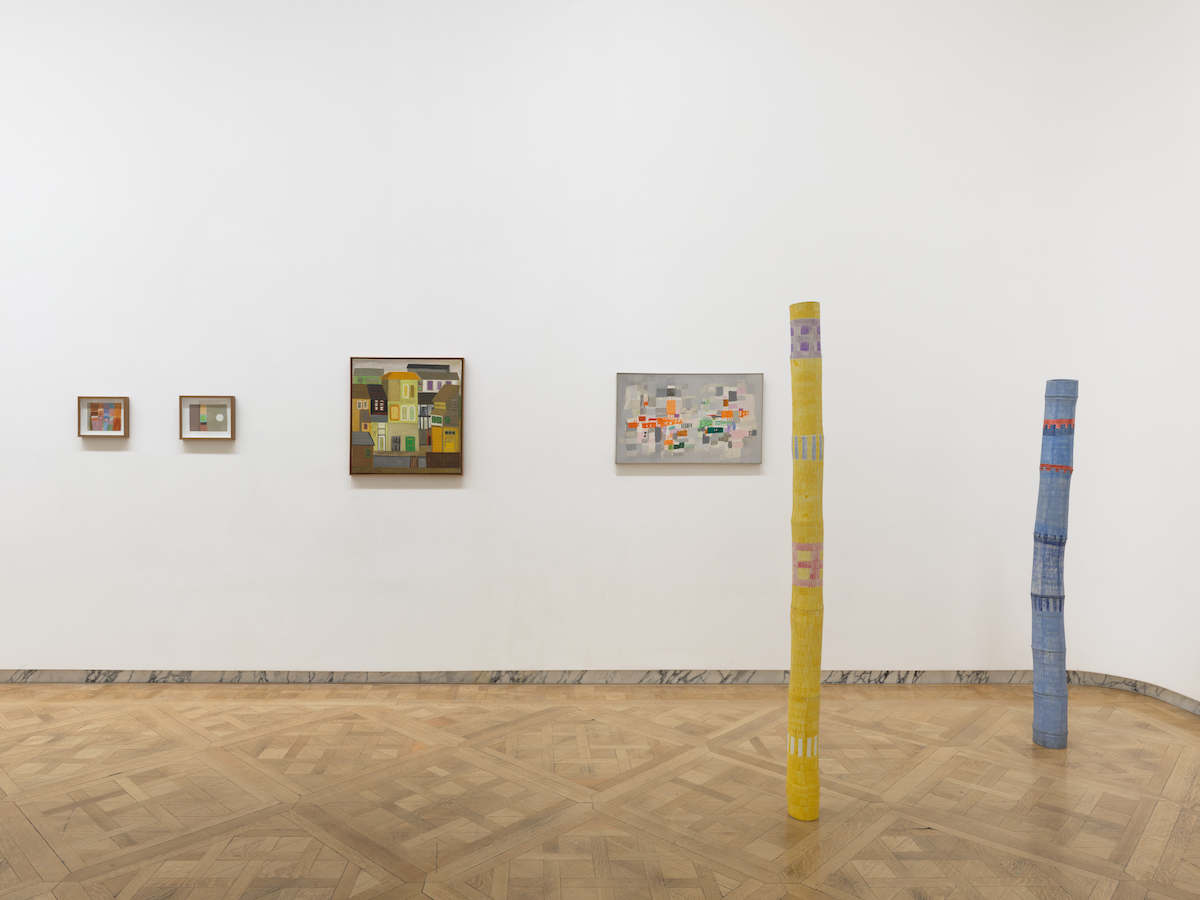
A version of this essay originally appeared in Reframed, the Art in America newsletter about art that surprises us and works that get us worked up. Sign up here to receive it every Thursday.
One of the most memorable sections of this year’s Venice Biennale is a vast room hung floor to ceiling with abstract works, many of them by dead artists. The star of this room—the pieces I can’t stop thinking about—appear not on the overcrowded walls, but in the space’s center, suspended from the ceiling.
That series, titled “Bambus,” is by Ione Saldanha (1919–2001). The late Brazilian artist painted the works on pieces of bamboo that she’d let dry over the course of six months, and in some cases even longer, before priming them with white paint and then adding bands of glorious color. These sculptures, which Saldanha started making in 1960, resemble a phantasmagorical forest in which each tree is a painting. If only it were possible to walk among them and see them from all sides.
A few select “Bambu” sculptures are on view in New York, at Salon 94, where Saldanha is being given her first-ever US solo show more than 20 years after her death. In this exhibition, one can get up close to a “Bambu” from 1980: the lithe, cadmium-colored object is ringed with white stripes, pastel blue checks, and other such markings.
Before making paintings that command three-dimensional space, Saldanha made paintings of voluminous spaces—albeit with similar planes of flat color. The earliest works on view in New York, dating from 1950, are urban scenes, views of Brazil’s Bahia state. She focused on clusters of buildings, but stripped their rectangular planes of detail, flattening them with that same eclectic mix of vibrant shades found in the “Bambus.” In both, hues range wildly, from bubblegum pink to hunter green, from pumpkin orange to butter yellow.
But buildings gradually disappeared from Saldanha’s work, and by the start of the ’60s, she was focused on abstraction. Still, the gridded windows and repeating doors from these paintings linger on as the structure undergirding an untitled painting from 1963. On this canvas, gridded elements form a drippy patchwork. The checkered, stripey patterns look just like the ones that ring the “Bambus” she started making around that time.
Bringing these forms beyond the canvas, Saldanha’s work was in direct dialogue with that of other Brazilian artists of her generation, most notably those involved in the Neo-Concrete movement, such as Lygia Clark and Hélio Oiticica, who tried to infuse sensuality into abstract painting by having their works fold up or jut out off the wall, into the gallery. But Saldanha never left the wall behind entirely. Even as she created her “Bambus,” she continued to paint on canvas, ping-ponging back and forth between abstract painting and physical space.
A 1966 canvas included in the Salon 94 show, for example, features a “Bambu”-like stack of colored rectangles, one of them striped. To the pile’s left, Saldanha painted a swatch of gray, leaving it rough in a way that recalls the surfaces of her sanded, dried bamboos. To its right, she painted a brown monochrome with a cream-colored orb at its center, alluding to the circular top of a “Bambu.”
Which is to say, Saldanha seems to have started with three-dimensional space—urban buildings—then abstracted it into flattened planes, only to bring it back into the sculptural realm in the form of towering tubes. Then she flattened those forms all over again, in a generative cycle that lasted decades.
